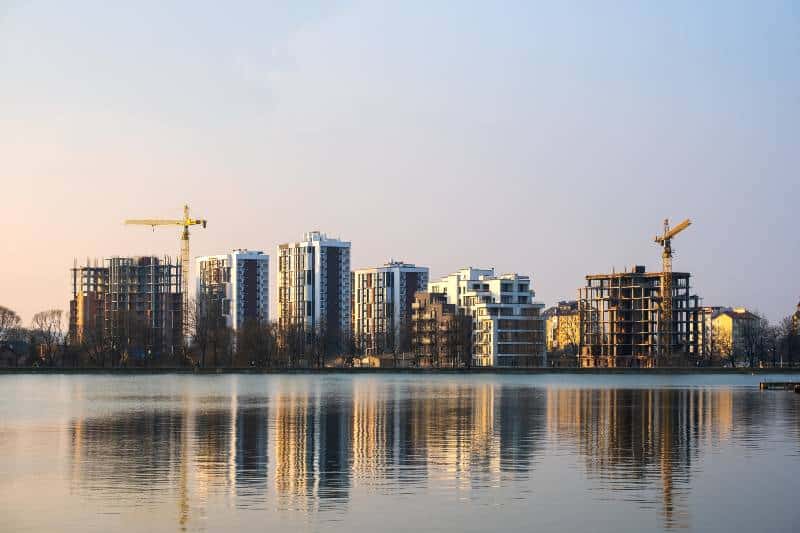With 18 years as a commercial real estate specialist, I’ve had an inside view of the medical office building sector’s tremendous boom. Demand for healthcare properties like medical offices and urgent care clinics has exploded recently. I’ve seen the rapid growth firsthand through my work in sales and leases. Feel free to ask me anything about this red-hot niche as commercial healthcare & medical real estate ascends for the future!
Key Takeaways
- The transition to outpatient and telemedicine care is lowering costs and improving experiences but requires updated medical office space.
- Limited new medical construction despite massive demand from an aging population is creating high occupancy rates and prices.
- Commercial real estate investors are increasingly attracted to the resilient and growing healthcare asset class.
Why I’m So Optimistic on Medical Office Buildings
There are several key factors driving capital into the medical office real estate market space:
- The transition to outpatient medical care: Health systems are rapidly shifting procedures and healthcare providers’ visits out of expensive hospitals into medical office facilities. This saves a ton of cost and offers patients a more welcoming environment. More on that later!
- Technology improvements: New tech tools like connected health records, video call checkups, and home monitoring are letting doctors give better care more easily. These gadgets help share information and check on patients without needing as many in-person visits or big office spaces.
- Demographic tidal wave: With 10,000 Baby Boomers turning 65 every day, healthcare is facing unprecedented demand. And all these folks want care that’s convenient!
With outdated facilities and limited capacity, the healthcare sector is rushing to expand its real estate footprint. This means major tailwinds for investors like me focusing on medical offices.
The Preventative Care Revolution
A huge change happening right now is the shift towards preventative medicine – keeping people healthy instead of just treating them when sick. This goes hand-in-hand with…
Community-Based Care
Rather than visiting impersonal hospitals, patients can access care in community wellness centers and local retail health clinics:
- Employers are building onsite clinics to reduce insurance costs
- Urgent care centers popping up in retail centers for access and visibility
- Medical offices integrating with mixed-use developments, senior living, and apartments
Convenient preventative care → healthier communities → lower system costs!
Telemedicine and remote monitoring devices play a role here as well – making routine care even more convenient.
Outpatient Facilities Taking Over
As mentioned earlier, health systems are rapidly transitioning procedures and appointments into outpatient facilities:
- In 2021, outpatient revenue surpassed hospital revenue for the first time
- Up to 30% cost savings compared to legacy hospital campuses
- Modern layouts improve patient experience and outcomes
Medical office buildings (MOBs) are purpose-built for this new care delivery model. By 2030, 50% of surgeries are expected to be performed in outpatient environments.
Major focus areas for new medical construction include:
- Women’s health: Labor + delivery, breast health
- Orthopedics: Joint replacement/repair, sports medicine
- Cardiology: Heart surgery, vascular care
- Oncology: Cancer treatment centers
Private equity funds, REITs, and major medical real estate developers are all racing to build modern MOBs to meet this need.
But what’s driving health providers to make the move in the first place? A few reasons…
Evolving Healthcare Driver Summary
- Lower costs: As mentioned earlier, outpatient facilities cut operating costs by ~30%
- Staffing challenges: New facilities allow improved workflows + amenities to reduce burnout
- Patient preferences: Consumers want accessible, welcoming facility environments
- Technology advancements: A retail space can integrate cutting-edge systems for efficient care
Real Estate Opportunities and Considerations for Healthcare Properties
With healthcare being incorporated into the day-to-day retail experience, location criteria are changing. Some key site considerations:
Accessibility
When evaluating optimal sites for medical properties, accessibility is vital. Patients and staff need easy access via public transit like bus and rail lines situated nearby. Highway access enables those traveling by car to conveniently enter and exit the area. Choosing sites with visibility at main intersections or along commercial corridors is crucial for allowing people to easily locate the building.
- Nearby public transit
- Easy highway access
- Visible location
Neighborhood Amenities
Another big thing is being close to stuff in the community. It’s convenient for patients and gets the clinic noticed. Having some related stores nearby like drugstores or medical suppliers can be helpful. And usual places like food shops, grocery stores, and coffee are good too. Home neighborhoods bring in lots of customers needing checkups. Hotels and gyms serve families visiting and people recovering after treatment.
- Retail/restaurants
- Residential areas
- Hotels, gyms, groceries
Flexible Design
Flexibility should also be baked into medical facility designs to allow for future growth and changes in care delivery. Standardized floor plates, rather than irregular layouts, facilitate simple interior reconfigurations. Modular wall systems enable tweaks and expansions down the line. And right-sized mechanical systems provide spare capacity, avoiding the need for costly upgrades to support additions.
- Standard floor plates
- Modular layouts
- Room for expansion
Commercial Real Estate Sector
As you can probably tell by now, I’m extremely bullish on medical real estate. Here’s a summary of market conditions from a CRE perspective:
Limited New Construction
- Less than 1% of existing inventory under construction
- 2-3 year delays for new feasibility/zoning projects
→ Extremely tight vacancies even with rapidly growing demand
Peak Investor Interest
- Recent capitalization rate compression to all-time lows
- Major equity funds competing for acquisitions
- Healthcare tenants also tend to be ‘sticky’ – with costly build-outs locking in medical tenants for 10-15 year leases much more often than traditional office
→ Record high property valuations
Resilient Performance
- Essential real estate asset, recession-resistant
- High rents and stable occupancy through downturns
- Medical offices proved extremely resilient even through the economic uncertainty of the pandemic – with stable occupancy and collections
- Outperforms traditional office/retail
I think medical offices and clinics will keep getting built super fast next year too. In 2022, over 18 million feet of new medical office space was used – 15% more than the year before! So these healthcare buildings are still in high demand and I expect lots of new construction coming in 2023.
Recommendations for Capitalizing on the Trend
For investors and landlords hoping to capitalize on this healthcare real estate boom, here are my top strategic recommendations:
Target High-Growth Markets
First, be sure to geographically target areas positioned for major healthcare property expansion. From my work closing deals across the country, I’ve noticed much of the activity in fast-growing southern cities and regions.
Lower-cost suburban areas outside higher-priced urban cores also present attractive opportunities to develop facilities like medical office buildings and urgent care centers.
Affluent retirement communities are a prime segment, as an aging population requires more services and a dedicated medical real estate footprint. Focusing efforts on these high-trajectory locations can lead to lucrative prospects.
Additionally, pay close attention to local healthcare system capital expenditure plans and aim to collaborate whenever feasible. By partnering directly with major health organizations through joint ventures or build-to-suit projects, you can align your growth with key drivers of demand.
This integrated approach allows following the momentum and being part of aligning stakeholders’ strategic expansion stories. Actively network to foster these relationships.
Thoroughly assess gaps in medical real estate supply through in-depth market studies before breaking ground on new properties. While overall demographic trends signal increasing demand, carrying out rigorous due diligence ensures your project meets an unfulfilled need.
This reduces the risk of delayed lease-up or problems attracting your target mix of physician tenants. As with any niche, specialized knowledge and preparation pave the path to prosperity.
Repurpose Existing Properties
In addition to new construction, I always encourage investors to explore repurposing existing properties that no longer serve their original use. The rapid growth in demand for medical real estate allows for getting creative with conversions from struggling retail, office, and other property types.
For example, empty big box stores or vacant small office buildings in well-located suburban areas can often be transformed into vibrant medical office spaces at a lower cost than developing new facilities. Healthcare tenants value easily accessible community sites.
Additionally, acquiring distressed assets in relatively affluent neighborhoods for renovation can unlock value while meeting healthcare system expansion needs. Repositioning and redevelopment leverage embedded land and infrastructure while refreshing outdated buildings. With some vision and proper execution, obsolete properties can find renewed purpose in the medical sector.
Design for Flexibility
When developing new medical real estate, I always emphasize embracing flexibility in construction and design. With the rapid pace of change in healthcare, the ability to accommodate future needs makes properties far more valuable.
Standard floor plates allow for easy reconfiguration as tenants evolve. Modular interiors and movable walls also permit cost-effective renovations down the road.
Similarly, right-sized mechanical systems provide the capacity to add exam rooms and partition workspaces while avoiding overbuilding infrastructure that raises costs today.
Going beyond near-term requirements creates enduring and adaptable spaces. The expertise to foresee long-term functionality while meeting current demand is what distinguishes top-tier medical developers.
The Future of Healthcare Real Estate
Big changes in the population and how people get medical care are driving tons of growth in outpatient clinics. With more and more customers but not enough new buildings being built, medical offices look like a good investment that will keep growing. And I think these positive trends around technology and demographics will keep fueling tons of construction of new healthcare facilities in 2023 as well!
I’m excited and positive about healthcare real estate right now – contact me anytime to chat about these trends or look at buying new property deals!
Frequently Asked Questions
What is driving health systems to prioritize outpatient facilities?
Outpatient facilities like commercial real estate medical offices and clinics deliver over 30% cost savings versus legacy hospitals. They also improve patient experience with convenience while matching preventative care model needs. Health systems are rapidly prioritizing these sites to enhance access, and outcomes, and align with value-based reimbursement trends.
Why are investors buying buying medical real estate or medical office buildings?
Commercial Real Estate medical buildings offer stable cash flows that outperform traditional real estate thanks to resilient occupancy and rents even in recessions. Meanwhile extremely low national supply compared to rapidly rising tenant demand driven by health system strategic expansion leaves an opportunity for more facilities in most U.S. markets.
What kind of medical real estate projects are providing the best returns?
Specialized facilities catering to high-margin orthopedic, cardiology, and oncology practices offer attractive premiums, given tenant demand and favorable reimbursement trends. Small suburban clinics proximate to retail and residential also lure physician groups with convenience and visibility.
Where are capitalization rates lowest right now for medical properties?
Capitalization rates for medical real estate assets have compressed rapidly across high-growth Southeast markets lately thanks to intense investor appetite. Retirement community regions also trade at premium valuations given stable tenant demand fundamentals and limited quality supply.
What are advantaged medical developers doing to create flexible properties?
Top medical developers deploy standardized and modular design elements enabling cost-effective renovations. These include replicable floor plates, movable walls, and appropriately sized mechanicals with the capacity to add future exam rooms. Together, these strategies boost asset lifespans by enabling quick refreshments and expansions as tenant needs evolve.





